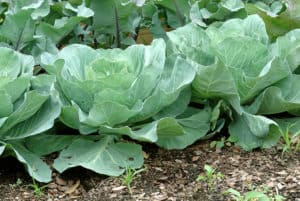The South American soybean harvest is on the mind of many in the commodity markets this time of year. One expert says the Brazilian soybean harvest was about three-quarters complete, and, as of last week, the results may be a dramatic step down from last year. That could mean extra export opportunities for American soybeans in the months ahead.
Michael Cordonnier is an agronomist with Corn and Soybean Advisors, Incorporated, in Hinsdale, Illinois. The Brazil soybean harvest is 75-80 percent complete, and the Safriña, or second-corn crop, is all but completed at 99 percent after getting planted in the optimal window of time.

“I think the weather has been pretty good to allow the second-corn crop to get in the ground,” Cordonnier said while on the phone from his office in Illinois. “It’s off to a good start, but there’s still a long way to go. However, the market seems pretty confident that we’ll see a good-sized Safriña corn crop.”
In fact, he says there’s so much optimism around the potential of the corn crop that it’s pressuring Brazil’s domestic corn prices. There’s even more pressure on their domestic corn prices because the Brazilian real is strengthening when compared to the dollar. He said it’s trading at about 4.7 to the dollar, the strongest it’s been in a year.
“The South American market, at least in Brazil, is very confident that we could see a corn crop that’s 25 million tons larger than last year,” he said. “There is some concern about potential frost late in the season before the crop matures.
“La Niña is still out there,” Cordonnier added, “and it’s going to stay a couple of more months. That generally results in earlier-than-normal frost. Any frost, at all, before the end of June is important for the Safriña crop in Brazil.”
The pace is a lot slower in Argentina, where the South American crop expert says the corn is about ten percent harvested while the soybean crop is less than five percent in the bin. Early yields continue to be disappointing, early on, so he said it remains to be seen what will happen in Argentina.
South American growing areas struggled with a drought that, in some cases, stretched back to 2021 and earlier. He said some of those same areas are starting to see some rainfall. However, many areas are still looking for a consistent drink of water to recharge their soils.

“There’s still some dryness in east-central Brazil,” he said, “including the corn-producing states of Goias and Minas Gerais. It remains to be seen if the dryness gets resolved, but I’m not optimistic as South America is getting closer to what’s typically a dry season.
“The last summer rains usually occur in early May, so there’s a month or two left in the summer rainy season,” he added. “But it’s getting better.”
Cordonnier predicts a Brazil soybean harvest of 123 million tons, within a narrow range of an upside of 124 and a downside of 120. However, he says farmers are “pretty close” to being done with results in the low 120s. He predicts an Argentine soybean harvest of 39 million tons. “I’m a little bit on the low side,” he said. “But I expect the Buenos Aires Grain Exchange to lower their soybean number as well.
“I expect Brazil’s farmers to produce 112 million tons of corn,” Cordonnier said. “We’ll see what the weather does to and for the Safriña corn crop. In Argentina, I stayed at 49 million tons for their corn harvest, and the Grain Exchange agrees with me as they lowered their prediction to 49 million. I thought they should have been at that number a long time ago.”
His numbers continue to get narrower for both corn and soybeans in each country. The overall South American soybean crop is going to be down by a big number from last year.
“I have the South American soybean harvest at 171.6 million tons compared to 198 million last year,” Cordonnier said. “That’s down about 26 million tons from last year, which is a significant drop. The news is better for the South American corn crop, which I have at 167 million tons, compared to last year’s harvest of 143 million.
“That’s up a good amount from last year,” he added. “That jump happened because the Safriña corn crop was such a disaster in 2021. Corn will be better than last year, and soybeans will be worse than last year: It’s the reverse of what we had last year in South America.”
Does that mean some soybean export opportunities for the U.S. this year? It’s likely, but Cordonnier says the war in Ukraine and its impact on global commodity markets makes it hard to know for sure what’s ahead for the remainder of 2022.





